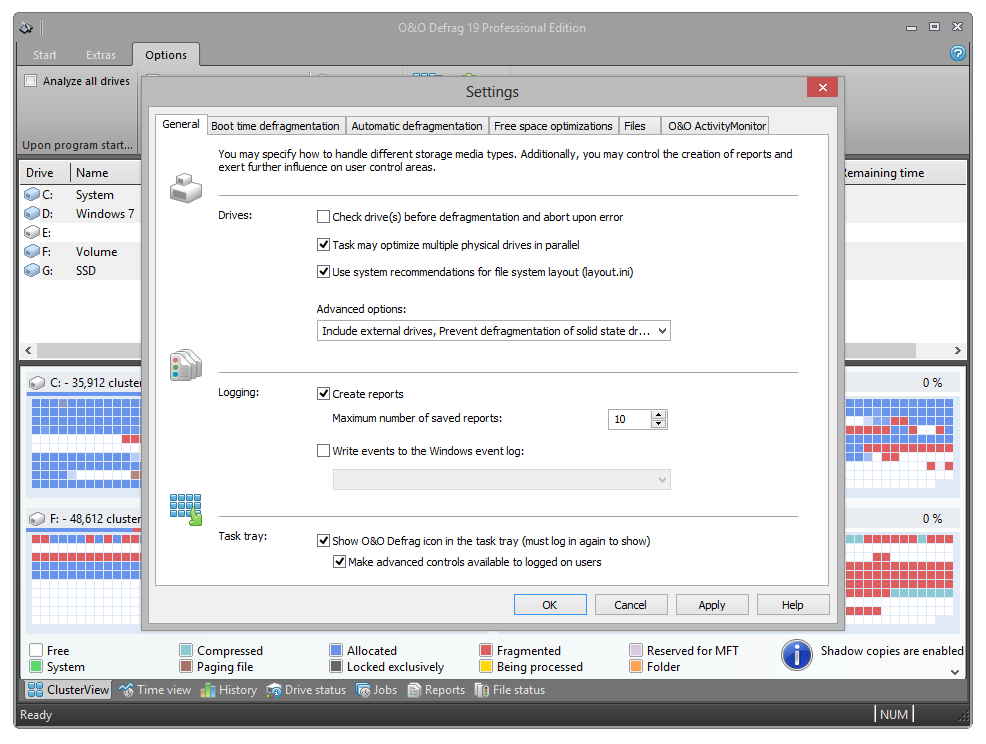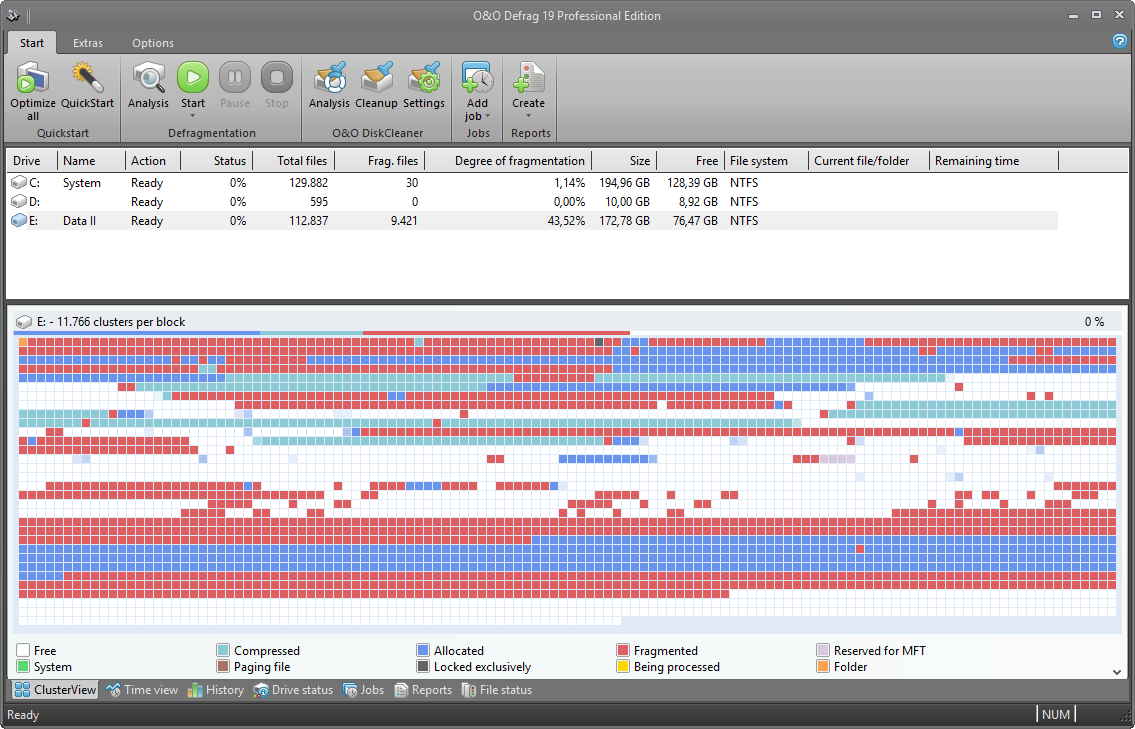O&O Defrag 19 Software With Integrated DiskCleaner and SSD Optimizer
$30 for single computer, $199 for servers
This is a Press Release edited by StorageNewsletter.com on September 24, 2015 at 2:49 pmWith Defrag 19, Berlin, Germany-based O&O Software GmbH releases the newest version of its program for speeding and cleaning up desktop PCs.
In this version, the DiskCleaner has been integrated to search for and remove temporary and superfluous files that take up much-needed memory. These unnecessary temporary files often contain copies of private content, such as email drafts, Thumbnails, copies of documents and Dumps. By removing them, the program also enhances a user’s data protection.
Click to enlarge
Defrag 19 software brings along an SSD optimizer that improves the actual structure of a SSD file system. Since their introduction there has been an ongoing discussion as to whether SSDs can be defragmented or not. In theory it is barely necessary since they operate so fast and the lifespan of the drive is reduced the more write accesses are made. As such a comprehensive defragmentation is neither required nor desirable. That has always been taken into account with Defrag.
In spite of this, SSD file systems suffer from an inherent fragmenting of data, just like a traditional HDD. This can be particularly high with cheaper models with limited storage space and where memory usage has reached a high level. This fragmenting reduces the read and write performance. When heavily fragmented files are rewritten, the actual wear leveling performance is also reduced. The NTFS file system soon reaches its performance limit when suffering from extreme fragmentation.
Click to enlarge
This is why Defrag 19 also provides an optimizer for SSDs which on the one hand resolves and prevents extreme fragmentation, and on the other hand ensures that unnecessary write operations are prevented and that the SSD optimization is rounded off with regular TRIM commands.
New and revamped functions:
-
In-built DiskCleaner: Searches for and removes temporary and superfluous files that use up memory and increase fragmentation. It also increases the data protection and security of a system as such files often contain private content (e.g. Thumbnails.db, document copies, email drafts, Dumps) as copies.
-
Improved optimization of SSDs: File systems on SSDs fragment heavily. As well as regular TRIM optimizing, Defrag 19 improves the file structure of an SSD by optimizing the heaviest fragmented files when needed to increase performance and extend the disk lifespan.
-
Shorter defragmentation times: Several drives can be defragmented simultaneously. In addition, the algorithms have been substantially accelerated, reducing the time required for a defragmentation by up to 35%.
-
Automatic defragmentation: Automatic defragmentation is enabled by default after the installation of Defrag and optimizes the disks in the background without slowing down the performance of the computer. Special procedures are initiated here to monitor the disk activity and ensure optimal use of system resources.
-
Optimizing VMs and SANs: Optimizes the actual memory allocation for VMs and SANs.
-
Data security: In this version, Defrag deletes the unused disk space upon request. This prevents confidential content of unsafely deleted temporary files being accessed by others.
-
Evaluation and analysis: Whenever the program is started, a manual analysis of all drives can be made and the level of fragmentation for each drive is displayed. It is also possible to display the most heavily fragmented files as well as the physical location of fragmented files on the HDD. A dynamic block view appears during defragmentation and with the help of a before and after view, the user can get a total picture of the system’s optimization.
-
History: Defrag has clear graphics that display which defrag action has led to which optimization success.
-
Automatic update: Defrag automatically checks if newer program versions are available and so can guarantee that defragmentation is always done using the latest technology.
-
Power management for netbooks and notebooks: As soon as mobile systems such as notebooks or netbooks are no longer connected to external power sources, the defragmentation is interrupted so that the full battery power is available for mobile workers.
-
Defragmentation methods Stealth, Space and Complete: Stealth and Space are optimized for the fastest possible defragmentation, while the Complete methods allow for a more complete defragmentation. This of course, requires more time and memory. The optimal utilization of existing storage space also prevents any new fragmentation. All methods can be applied to any drive, including Volume and Stripe Sets, and of course guarantee maximum reliability.
-
Zone filing on drives: A logical separation of data into performance-critical and noncritical files is conducted through an alternative setting which divides drives into socalled zones. Files are sorted based on their use and access frequency and moved into appropriate zones. For example, system and program files that need to be accessed very quickly are separated from other data such as documents and downloads. Fragmentation is prevented intelligently through the separation of files written rarely or frequently. This logical arrangement not only shortens the duration of the system or program start, but also prevents fragmentation of program files from ever occurring.
Click to enlarge

Defrag 19 costs $29.95 for a single computer license, and $49.95 for a 3-PC license. The Server Edition for use on company servers will be released soon and will cost $199. All prices include VAT where applicable.

















 Subscribe to our free daily newsletter
Subscribe to our free daily newsletter

